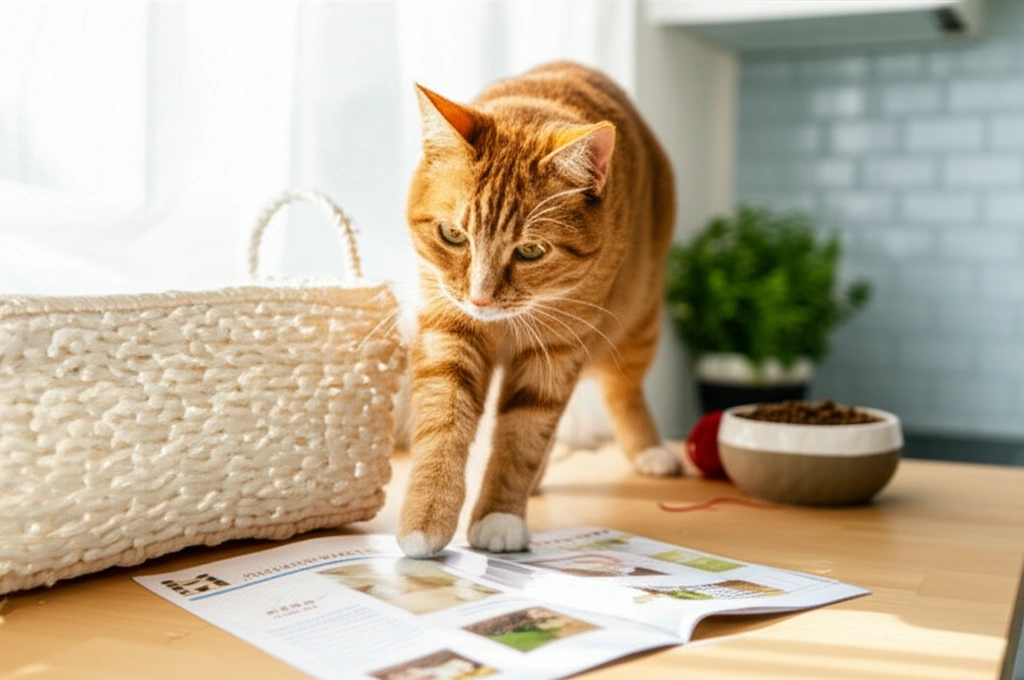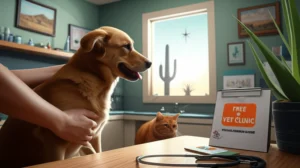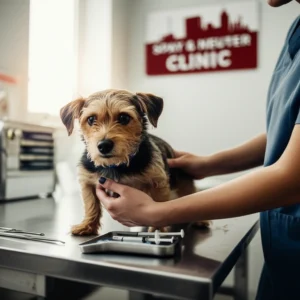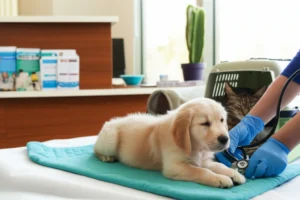So, you’re sitting there thinking, “Is pet insurance really worth it for my indoor cat?” I get it. You’ve got a cozy little furball living exclusively inside, safe from the outside world’s dangers, right? Well, before you decide to skip the insurance and stash that money in a jar (or better yet, a hidden snack stash for yourself), let’s take a minute to unpack this together.
Yes, pet insurance can be a great investment for indoor cats, especially when you consider those surprise health issues that pop up like uninvited guests. But like everything worth talking about, it’s not a simple yes or no answer — more like a “let’s weigh the pros and cons and figure out what fits your life.”
Quick Take
Is Pet Insurance Worth It For Indoor Cats?
Absolutely—indoor cats still face health risks. From accidents around the house to unexpected illnesses, these little creatures aren’t immune just because they don’t roam outside. Insurance offers peace of mind, so if your cat needs emergency care or treatment for chronic conditions, you’re not left staring at an astronomical vet bill. That said, it makes the most sense for kittens, senior cats, or breeds prone to genetic conditions, and if you prefer financial predictability over surprise vet costs.
What You’ll Learn Here
- Why indoor cats aren’t as safe as you might think
- How pet insurance works and what it covers
- Real-life examples when insurance saved the day
- How to decide if insurance is right for you and your kitty
- Top providers to consider including healthy paws pet insurance and lemonade pet insurance
Why Indoor Cats Actually Face Health Risks
Is Your Cat Really 100% Safe Indoors?
Let’s debunk a myth: just because your cat is an indoor lovin’ fluffball doesn’t mean health issues won’t come knocking. Injuries can happen right under your roof.
Household Accidents
Picture this: your curious cat jumps down from the bookshelf or slips on your hardwood floor and hurts a paw or fractures a bone. Or maybe Fido left a toxic plant out — and kitty took a nibble. Things like burns from a hot stove or getting tails or paws closed in a door happen more than you think.
Health Conditions Indoor Cats Face
Indoor cats can still get urinary tract disease, dental problems, diabetes, thyroid issues, and even cancer. These aren’t just “outdoor cat problems.” Stress or boredom indoors can weaken their immune system, increasing risk of illness. And according to veterinary experts, these conditions can lead to costly treatments that add up fast.
Age and Genetics Play a Role
Does your cat hail from a breed with hereditary concerns? Or maybe your kitty is entering their golden years? Both factors increase the likelihood of needing medical care, no matter how safe their indoor world is.
The Financial Side of Unexpected Vet Bills
Say your fluffy friend needs emergency surgery for a fractured leg. Vet bills for such procedures can run into the thousands. For example, a simple fracture repair might cost a few hundred dollars, but surgeries and follow-up care can quickly climb past $1,500 or more.
Some pet parents prefer “self-insuring” by saving $25–50 a month, but we all know life likes to throw curveballs, making consistent saving tricky. Insurance, though, cushions those sudden costs so you can focus on your cat’s health and not your wallet melting.
Understanding Pet Insurance for Cats
Let’s Break It Down
Think of pet insurance like health insurance for humans — you pay a monthly premium, and if your cat gets sick or hurt, insurance chips in.
Key Terms to Know
- Premium: Your monthly payment to keep the plan active.
- Deductible: The amount you pay out of pocket before insurance kicks in.
- Reimbursement Rate: The percentage of covered costs insurance will pay back.
- Annual Limits: The maximum the insurer will pay per year.
- Waiting Period: The time you must wait after enrolling before coverage starts.
- Exclusions: Conditions or treatments not covered (like pre-existing conditions).
Coverage Options
Policies usually fall into categories:
- Accident-only: Covers injuries like broken bones or poisonings.
- Accident & illness: Includes sickness, chronic and acute conditions.
- Wellness add-ons: Optional extras for routine care – vaccinations, dental cleaning, etc.
Most insurance works on a reimbursement model — you pay the vet upfront, then submit the claim to get money back. Keeping itemized bills safe makes this a breeze.
When’s the Best Time to Buy?
Buying early (when your cat’s young and healthy) often means lower premiums and full coverage for illnesses that might develop later. Waiting too long can lead to sneaky pre-existing conditions being excluded.
Is Pet Insurance Worth It? Cost vs. Value
How to Decide
- How well can you handle surprise $1,000+ vet bills? If a sudden $2,000 surgery would send you into a panic, insurance provides peace.
- Consider your cat’s health and breed. Some cats have hereditary conditions making insurance a smart choice.
- Weigh annual premiums against vet costs in your area. The average premium for a cat is around $28 per month, though it varies.
A Couple of Real-Life Stories
Kyla’s Kicker Cat
Kyla’s indoor kitten swallowed a sewing needle (don’t ask!). Surgery and emergency care would have been a wallet wrecking $3,000, but insurance credit eased that impact tremendously. Kyla was able to focus on snuggling her kitten instead of stressing over bills.
Old Mr. Whiskers’ Kidney Journey
Mr. Whiskers, a senior Persian cat, developed kidney disease. Months of medication and vet visits were ongoing costs. Insurance helped spread the financial load and made managing chronic illness much less scary for his owner.
Top Providers & What To Look For
Shopping Tips
Look for:
- Coverage of hereditary and chronic conditions
- Reasonable waiting periods — the shorter, the better
- Transparent exclusions and limits
- User-friendly claim processes (a fast app and prompt reimbursements are gold)
- Customer service reputation
Some Popular Names to Consider
| Provider | Why Consider | Notes |
|---|---|---|
| Healthy Paws Pet Insurance | Great coverage for accidents and illnesses, highly rated for claims service | Popular for comprehensive care |
| Lemonade Pet Insurance | User-friendly digital experience, quick claims | Strong for tech-savvy pet parents |
| Nationwide Pet Insurance | Offers customized plans including wellness coverage | Good for those wanting flexible options |
And don’t forget to explore the best pet insurance for cats guides to compare plans based on your specific needs.
When Insurance Clearly Pays Off (And When It Might Not)
Moments Insurance Shines
- Emergency surgery after accidental injury
- Costly cancer treatments or chronic disease management
- Extended hospital stays or advanced diagnostics
When You Might Skip It
- If you have a very healthy, low-risk cat and reliable savings
- If you prefer to self-insure and absorb smaller vet costs yourself
- If high premiums with low payouts don’t make financial sense for you
A Quick Cost Comparison
| Scenario | Insurance | Self-Insure |
|---|---|---|
| 5 years of premiums ($30/mo) | $1,800 | $0 |
| Major emergency surgery cost | $300 out-of-pocket (after reimbursement) | $5,000 upfront |
| Total cost with big event | $2,100 | $5,000+ |
How To Get The Most From Your Cat Insurance
Choosing Wisely
Match your plan’s coverage with your cat’s risks. If hereditary issues run in your cat’s breed, pick a plan that includes those. Adjust deductibles and reimbursement to balance premiums and out-of-pocket costs.
Save on Premiums
- Look for multi-pet discounts if you have other fur kids
- Opt for higher deductibles if you can manage larger small costs
- Consider wellness bundles separately vs. bundled in your plan
Smooth Claims Are Happy Claims
Keep clear digital copies of invoices and vet reports. Follow instructions closely when filing claims and ask your vet for estimate codes when needed — this speeds up reimbursement.
Myths And Truths About Pet Insurance For Indoor Cats
Myth: Indoor Cats Don’t Need Insurance
Truth? Indoor cats face risks every day — accidents, illnesses, toxins. Insurance isn’t about “if something will happen,” but “when” and “how much will it cost.”
Myth: Insurance Covers Everything
In reality, all policies have fine print. Pre-existing conditions and routine care can be excluded unless you pay for add-ons.
The Emotional Side
When your pet’s health is on the line, insurance can ease the fear and stress of costly medical decisions, letting you focus on what truly matters — their care and comfort.
Wrapping It Up
So, is pet insurance worth it for indoor cats? For many, yes. It’s about giving yourself that safety net — because let’s face it, life with pets is full of surprises. If your cat is young and healthy, think of insurance as a way to protect what could be a very expensive future. For senior or genetically predisposed kitties, it can be a lifesaver. But every pet parent’s situation is unique.
Take a close look at your cat’s health, your financial comfort with risk, and the details of any insurance policy. Explore options like healthy paws pet insurance, lemonade pet insurance, or nationwide pet insurance for tailored choices. And don’t forget to check out the best pet insurance for cats guides for extra help.
Remember: pet insurance isn’t just about money; it’s about peace of mind — giving you the freedom to say “yes” to the care your beloved indoor cat deserves without the financial stress. And at the end of the day, isn’t that what every pet parent wants?
So, what do you think — does insurance sound like the right option for your indoor kitty? If you have questions, I’m here to help!











